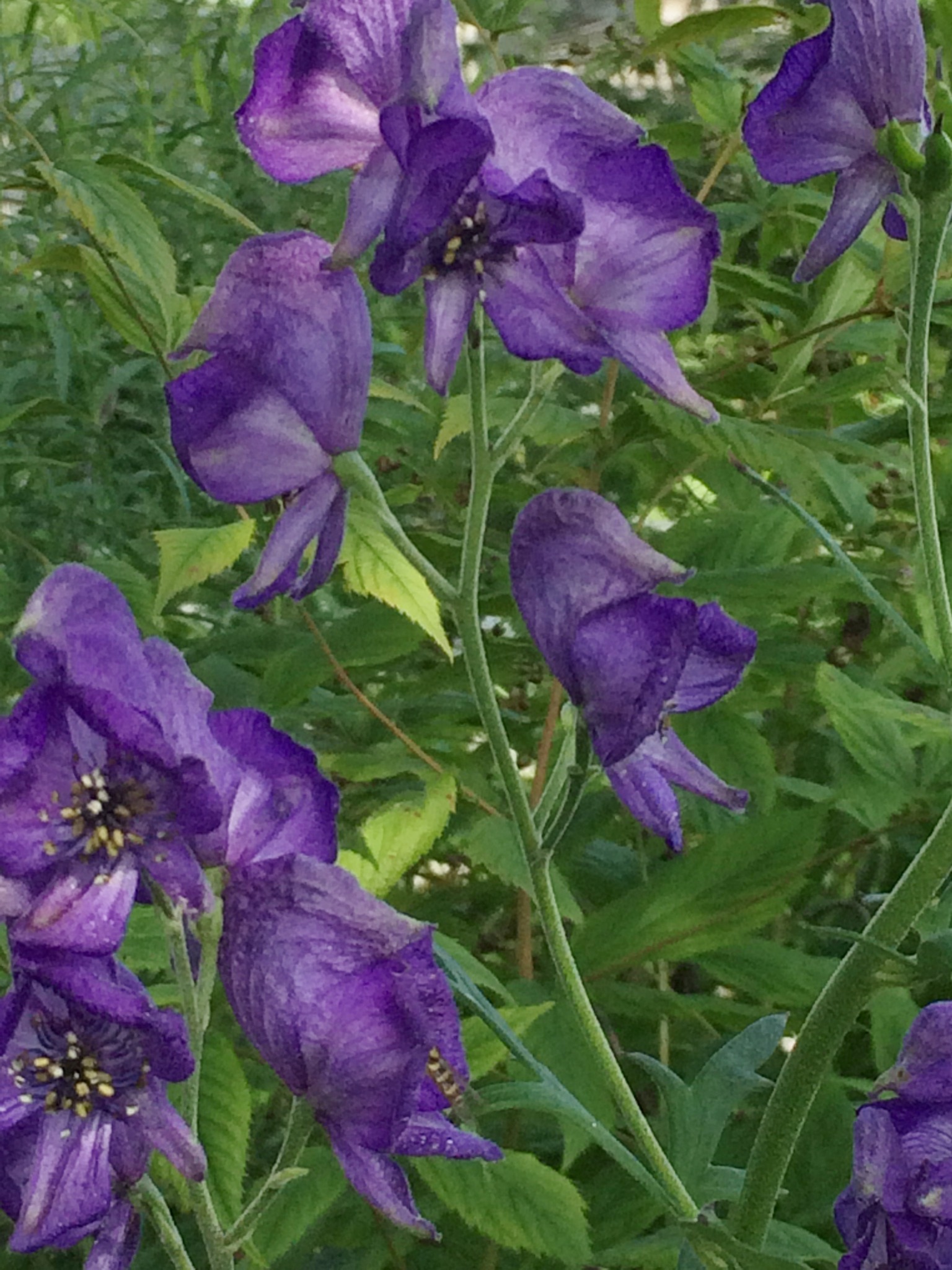
Infuriatingly, the blood samples taken on his admission to hospital were destroyed – despite being labelled ‘To Be Retained’. Asmat Mustajab, the histopathologist called for the pre-inquest hearing, also believed that aconitum “more likely than not” played a key role in Nathan’s death Richard Greenway, Nathan’s father, who investigated and made the connection with monkshood poisoning, thought the plant was to blame. For example it was reported that he was ‘drenched in sweat’ – was this the clamminess associated with Aconitum poisoning or a viral sweat? Also some of the symptoms were not those expected. In Nathan’s case, as death occurred some 10 days after developing symptoms, monkshood poisoning was ruled out as monkshood’s fatal effects are usually instantaneous. The coroner ruled that his death was due to unexplained causes. He had allegedly brushed past a lot of monkshood (27 August) but had not handled any of it – to anyone’s knowledge. Recently ( Inquest Report June 2015) there was sad news in the media about the death of Nathan Greenway (7 Sept 2014), a gardener who died of multiple organ failure. Don’t try this at home as just 2 milligrams of aconitine is lethal. The purpose was to avail the shaman or witch of a dangerous herb’s intoxicants, getting high for visionary or mystical journeys, while avoiding some of the fatal effects. Sound evidence of this,as you can imagine, is missing.
#WOLFSBANE POISONING SKIN#
So called “flying ointments” were allegedly used by witches (hence flying on broomsticks (wooden dildos)) where a balm or salve containing a poisonous herb was applied to the skin to control the dose. One of monkshood’s older common names was Venus’ Chariot so it may have been used in pagan flying ointments. Avoid picking a wild bouquet of it to take home!! Luckily cases of fatal monkshood poisoning are rare as it tastes foul and bitter and would quickly be spat out.Īs well as the already mentioned toxins aconitine, mesaconitine and hypaconitine, poisonous monkshood also contains at least a dozen other poisonous compounds, diterpenoid alkaloids, jesaconitine, lycoctonine, neopelline, neoline, benzoylaconines, and aconins. A 2mg dose of aconitine can cause death within 4 hours.

The estimated lethal dose is 2 mg of aconitine, 5 ml of aconite tincture and 1 g of the raw aconite plant (Chan, 2012 Qin et al., 2012). The attached charts show the distribution of alkaloids in the organs at autopsy. In autopsies, Aconitum alkaloid levels are found to be highest in the liver and kidneys, and lower in the heart and cerebrum, the latter having lower levels than the blood (Niitsu et al, 2012). Patients with internal Aconitum poisoning will have cardiovascular (slows and stops the heart), neurological (pain, convulsions, paralysis), gastrointestinal symptoms (nausea and vomiting) and there are often other signs (for example, confusion and mania can occur if the alkaloids reach the brain). So do not pick or handle this plant without gloves, especially by the root.Ĭommon signs of monkshood poisoning include tingling, tongue and mouth go numb, nausea with vomiting, breathing becomes harder and laboured, pulse and heartbeat become weak and irregular, skin is cold and clammy. The neurotoxins, aconitine and mesaconitine can be absorbed through the skin and cause severe respiratory and cardiac problems. It was used as a poison for arrow heads when hunting wolves (hence wolfsbane) and, as it is so fast acting, probably had then falling in the dust without a struggle The Latin name Aconite comes from the Greek ἀκόνιτον which means “without dust” and “without struggle”. Aconitine, mesaconitine, hypaconitine and other alkaloids have potent cardiotoxins and neurotoxins found in all parts of the Aconitum species, especially in the tubers and roots.

Monkshood ( Aconitum napellus) also called Wolfsbane, is pictured here growing in a hawthorn bush.


 0 kommentar(er)
0 kommentar(er)
